Passive aroma diffusers : a simple solution
This article is dedicated to the most natural solution for dispersing aromatic oils: passive diffusers. We will discuss different solutions for passive diffusion which will intrigue you and inspire you.
I will also see a couple of different blends which are a great starting point for trying out the different means of passive diffusion.
Finally, if you want to try passive diffusion, but don’t know where to start, make sure that you take advantage of Après-You’s passive diffuser giveaway!
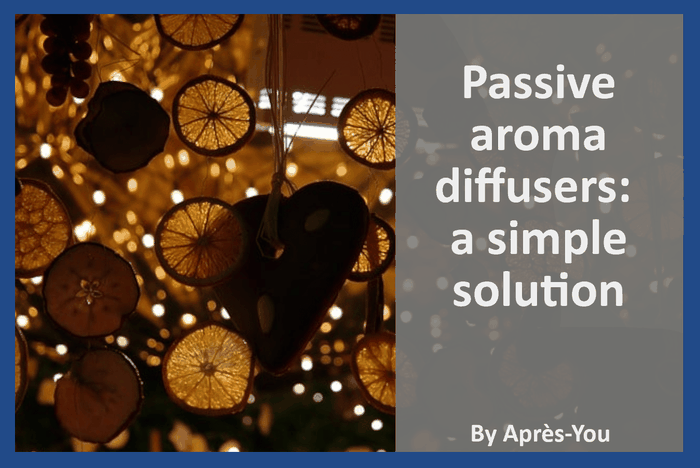
The essential about Passive aroma diffusers
Passive diffusers are simple devices that will diffuse essential oils without the help of an external energy source (such as heat or vibration).
Compared to other diffusion systems such as ultrasonic ones or those which work through nebulization, passive diffusers have a smaller diffusion spread.
Therefore, they are elegant solutions for diffusing oils through smaller areas and for personal use.
Structure of the article
1. Necklace aroma diffusers
2. Passive aroma diffusers for your home
3. Reed aroma diffusers
4. To conclude
- Resources
- Disclaimer
- Pictures
Diffusion through passive means is my go-to method for using essential oils. Passive diffusion is a very simple solution that does not require investment in larger devices, water, or batteries.
With passive diffusion, you take advantage of the natural properties of aromatic oils and appreciate their benefits on a smaller, more personal level.
For example, one of the simplest and most “low-tech” solutions for passive diffusion only requires things you most likely already have in your home.Put a few drops of oil on a tissue and put it in your breast pocket. The tissue is close enough to your nose to perfume your personal airspace.
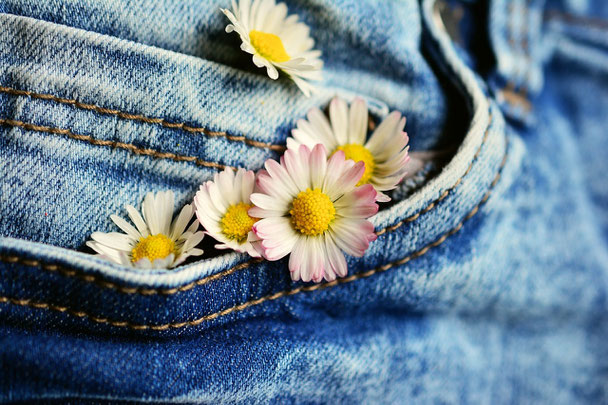
1. Necklace aroma diffusers
Alternatively, you can try a necklace diffuser. This method is similar insofar as you place a few drops of your chosen oil on a felt bad placed within a locket-like diffuser pendant.
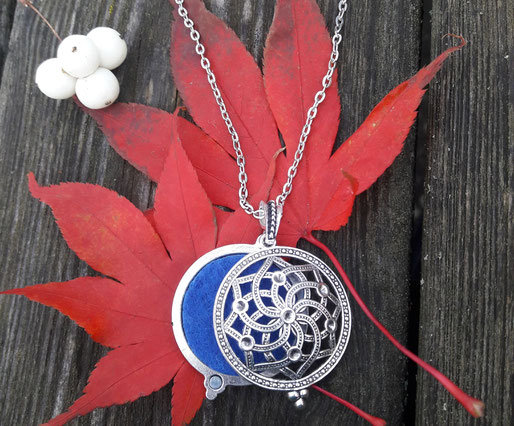
My wife uses a necklace diffuser especially in the wintertime with a special blend to help fight against flu and cold. See below. Even under a coat, body heat will gently warm the oils inside the diffuser and diffuse them locally.
With this blend, it is an extra layer of protection against the viruses and bacteria that are so prevalent in the cooler times of the year.
Recipe idea
You can prepare a bottle with:
- 3 portions of:
-
- Ravintsara (Cinnamomum camphora),
- Tea tree (Melaleuca alternifolia),
- Niaouli (Melaleuca viridiflora)
- 1 portion of:
-
- Thyme Linalol (Thymus zygis CT Linalol) max 10% of the recipe,
Why these differences of proportions? It is recommended to diffuse Thyme Linalol at 10 % max.
Shake to homogenized and you are ready to create an aromatic invisible shield for yourself.
By using only two or three drops of this blend, the perfume is present for the wearer and yet also not so strong as to be disagreeable for those who are nearby (such as behind closed doors in a meeting for example, or when crammed together on busy public transport).
Necklace diffusers have another great advantage that goes beyond essential oils.
Have you ever purchased a perfume, and then not liked how the perfume smelled when you wore it on your skin? If you put the perfume on a diffuser (vs. on your skin), the smell of the perfume does not adapt to your body chemistry and will not change.
Just remember to use one disc for your perfume and another for homemade fragrances. After one or two sprays, put the disc in the locket pendant and let the charming smell do its work.
Sometimes a sweet smell attracts more than just other people, as was the case with the lady wearing the Ylang-ylang in the introduction!

Making a symphony of scents for perfume is a very big subject, which will be discussed at a later date in a separate article. However...
2. Passive aroma diffusers for your home
We have all been working from home a bit more than we had ever thought we would be this past year. And, despite missing out on the stress of morning traffic, stress levels have nonetheless remained very high. You can fight against stress and change the atmosphere of your working space through other very simple solutions for passive diffusion.
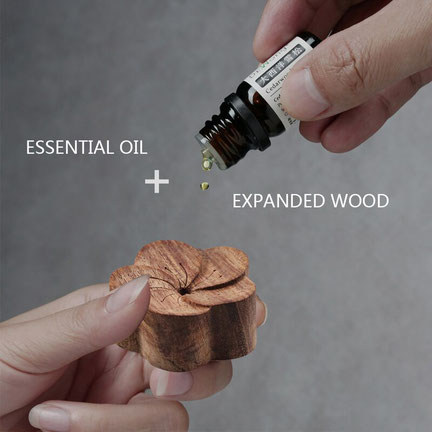
A wooden diffuser is a nice solution for spreading the aroma of your favorite oils at home. Wooden diffusers function through the same principle as do the diffusers discussed above. You diffuse via a wooden diffuser by pouring a few drops of oil on a small piece of wood. As the oils are warmed by the ambient air, their smell will emanate throughout a small area, naturally perfuming it.
Using these kinds of passive diffusers can also be advantageous as a sleep aid. Because wooden diffusers do not use water, a candle, or electricity, they do not present the same hazards as do other diffusion devices. Try a wooden diffuser on your night table, and see what sweet dreams may come! (See the Giveaway section for a recipe idea to use passive diffusion as a sleep aid).
Although you are (generally!) awake when at your desk, using passive diffusion around your computer is also an excellent method, as it works without water, so you run less risk of damaging your expensive electronics.
Recipe idea to stay focus
To help you to stay focus and clear when you work, you can diffuse:
- Rosemary CT Cinéole (Rosmarinus officinalis)
- Vetiver (Vetiveria zizanioïdes)
- Peppermint (Mentha piperita)
Independently or blended together these oils will help you to keep productive.
The Rosemary gives a fresh Eucalyptus touch, while the Vetiver anchor with a deep and heavy scent, and the Peppermint is very refreshing.

Maintaining these kinds of diffusers is very easy. It has been my experience that it is easy to replace one essential oil with another. Once the first essence has been diffused, the piece of wood can retain a light reminder of the previous odor (especially with heavy oils, like Cinnamon (Cinnamomum cassia). However, this smell should normally not be overly present when you diffuse another subsequent oil.
Wooden diffusers like the ones discussed above are used for passive diffusion when you want to diffuse essential oils on an occasional basis. However, if your desire is to give a specific aroma ambiance to a small room, for example, there is another type of wooden diffuser which is better suited to that purpose.
3. Reed aroma diffusers
Have you ever seen long wooden sticks sticking out of a bottle in higher-end restaurant bathrooms?
Like the water-growing plants they so closely resemble, this variety of passive diffusers is called a reed diffuser.
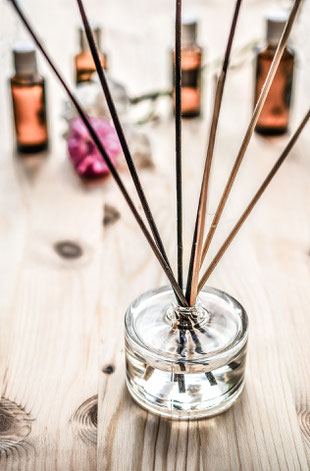
These kinds of diffusers are nice and neat. Often, commercially-purchased versions utilize both essential oils as well as non-naturally produced products. The good news is that making reed diffusers is an easy DIY project! Below some written instructions for expressing some creativity in your scent diffusion accessories:
DIY reed diffuser
- Find a container with a narrow opening, such as an empty perfume bottle or even a pretty schnapps bottle. Antique stores and flea markets can be great places to spot nice containers. Be sure that the opening is not too large, or else you will have to put too many reeds/sticks inside to make them stand correctly.
- Choose a carrier oil and pour 60 ml into the jar.
- Choose an essential oil (or make a blend) and add 25 to 30 drops to the carrier oil.
- Stir gently and add 4 to 8 reeds/sticks to the jar.
- Purchase reeds/sticks at your local craft store.
Voilà, you are on your way to establishing a signature scent ambiance for a small room.
After one hour, flip the reeds/sticks, so that both ends of the reeds are saturated with the mixture of oils.
The above is adapted from an article from Wikihow. For more details, follow this link WikiHow.
Another kind of reed diffuser that is similar in function if not in appearance involves a small wooden diffuser with a rod that is placed directly into a bottle of essential oil (or blends thereof). I was told about this method a few months ago by a supplier, and I have been impressed by the many great advantages this simple solution has to offer.

The porous nature of the wood used in these diffusers is quickly saturated by the oil and is rapidly diffused. However, the diffusion rate is very gentle, so the risk of oversaturating the air is very low.
The only disadvantage is that the drip stops in the bottles are not always an easy fit for the wooden stem of the diffuser, so it sometimes requires some strong pressure to get this diffuser set up. Another advantage is that the wooden diffuser works as a king of the lid, preventing massive oil spills should the bottle be knocked over.
In other words, you can easily use such a diffuser at your desk without the risk of splashing scented oil all over the keyboard and desktop. This kind of diffuser is also at home in a small room like a bathroom, where it can easily and discreetly refresh the air with natural products.
One big advantage of this diffusion technique is the creation of a seal that limits air contact with the essential oil in the bottle. Too much air within a bottle of essential oil will cause oxidation (which will change the properties of the oil).
Oxidized essential oils should be avoided. Through oxidation, the chemistry of the oil will change and may produce molecules that can be harmful. By using a ball diffuser, you have the advantages of diffusion while also mitigating the air contact of the essential oil still within the bottle.
It is especially useful if you want to diffuse oils that are more sensitive to oxidation, like those in the citrus family including Lemon (Citrus limon), Grapefruit (Citrus paradisi), Bergamot (Citrus bergamia) ...

For this reason, the best practice would be to dedicate a small bottle (2.5 or 5 ml) for this type of diffuser.
Tip
A recipe idea for refreshing the air in a bathroom
For a 5 ml bottle (volume c. 150 drops)
- 30 drops Peppermint (Mentha piperita)
- 30 drops Lemon (Citrus limon)
- 30 drops Tea tree (Melaleuca alternifolia)
3x30 drops equal approximately 3 ml. You won’t want to over-fill your bottle, as you will still need room for the stem of the ball diffuser inside.
Of course, this recipe can be adjusted according to your taste.
It is difficult to be precise (especially as concerns variations in temperature).
However, such a diffusion blend should last around one month. After this point, you can refill with the same blend, or try another composition. If you want to change your blend, you will need to also change this kind of wooden diffuser.
4. To conclude
- Passive diffusion systems are the closest form of diffusion to what plants do. They only use the essential oils’ own powers of diffusion.
- Passive diffusers are also very simple to use. In most cases, you need only to use a few drops to appreciate the effects of the oils.
- There are several models, including necklaces, wooden diffusers, reed, and ball diffusers.
- You can easily travel with them. Even if it is difficult to travel nowadays, you can have them with you wherever you go.
- They do not need special maintenance. No batteries, no water, no fire.
- Their effective dispersal is limited, making passive diffusers ideal for personal usage or within a small room.
Be safe, be essential!
You can be part of the Very Essential People group.
You will get informed of the new articles and you will get discounts on the Après-You e-shop, you just have to sign up.
It is free and without engagement.
Disclaimer
I do not pretend or want to replace any medical judgment or prescription. All the information within this post is intended to be informative! Please, always use essential oils carefully and with respect. In case of doubt, always ask a medical professional first.
Pictures
If you have any questions or remarks about the pictures and credits, feel free to send an email to info@apres-you.com.


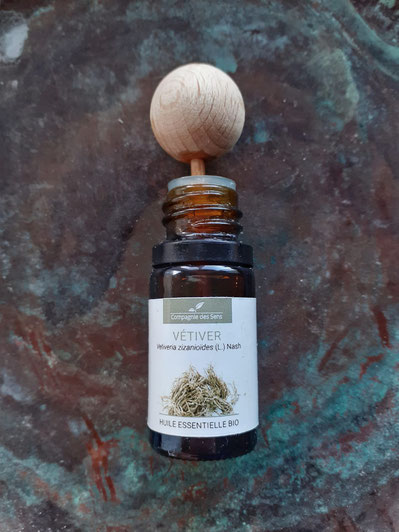
Write a comment